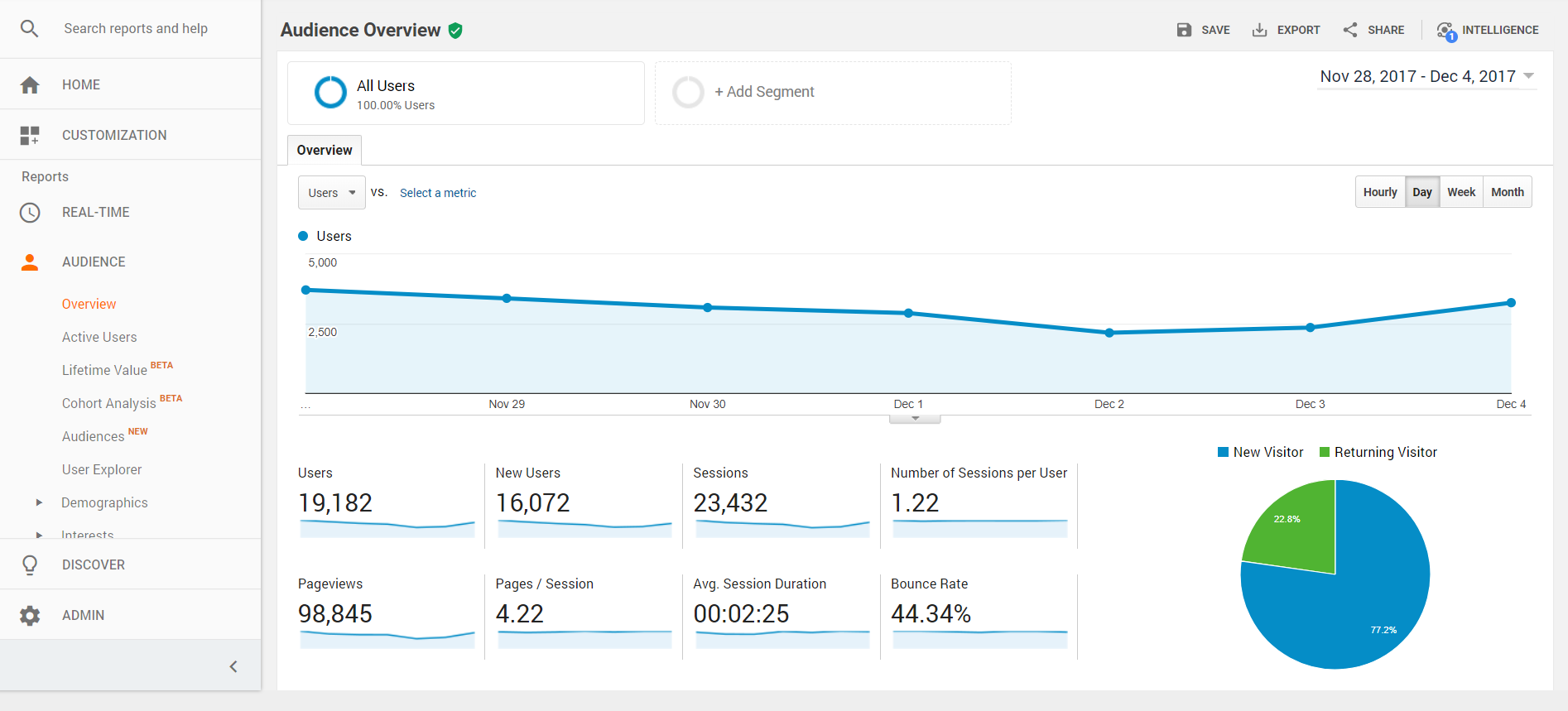B2B SEO Best Practices to Dominate Search Engines and Rank Higher
SEO is a daunting business. There is much to account for when creating an effective SEO strategy and it’s easy to lose yourself amongst the ever-shifting sands of search algorithms and innovation. But fear not, by implementing a select few SEO best practices you will see a dramatic improvement in your organic results visibility. Below you find an elaboration of some of the most important factors that you should concentrate on in order to dominate and rank higher.
1) Know your company, your audience, and your competition.
Here is a simple scenario: Your B2B e-commerce website is in direct competition for placement in search engine rankings. Competition is fierce but never fear for you have devised a cunning strategy to dominate search rankings for your chosen keywords and thus make it easier for your audience to find your excellent products and services. However, before you put your plan into action you should ask yourself how well you know your company, your audience, and your competition and consider whether or not this knowledge has been incorporated into your plan. Your ability to accurately understand the interplay between company, audience and competition will have a direct impact on the effectiveness of your strategy, and unless you have attained this understanding you risk losing out to competitors. So sit down a while, eat a chocolate biscuit, sup on a coffee, eat another chocolate biscuit and consider the following in more detail:
Your Company
It can be difficult to stand out from the competition but rest assured your company will have marketable qualities that can be leveraged as part of a successful SEO strategy. So what are your strengths, your values and what is your mission? Answering these question can be invaluable in determining what are your relevant keywords.
Your Audience
Get to know them. Why waste resources creating content and devising SEO strategies that are missing their mark? For content to be relevant you must first understand the intent of your audience. Then you can shape content to match with their level of knowledge. For example, a B2B e-commerce audience will generally be very knowledgeable about a given product or service and when they engage with your company they want you to provide them with deep knowledge and insights on the subject matter and all couched in the language they use and understand. So no pressure.
Fortunately, there are many ways to get to know your audience.
Talk to them. People have been using this free tool for eons. Ask your audience how they found your company (specifically any search terms they used) and what their opinions are of the content and language used throughout your site.
Google Analytics can provide incredible insights on website traffic.
Your Competition
Here is a truism: You have competition and they are fighting for dominance in the market. Now the obvious has been stated what insights can be gained.
On a surface level, you can search in private/incognito mode for keywords you think are good candidates to rank for then take note of the competitors for these keywords. Perhaps you will need to reconsider certain keywords if you see the competition is too hot to handle.
Lift the curtain on your competitor’s SEO secrets by performing an SEO audit of their site. SEMrush can provide you with such details.
2) Keywords
By using the knowledge you have gained on your company, your audience and your competition you can begin to craft your list of keywords. Tools like Google’s Keyword Planner and Google Trends can help you determine if your keywords are worthy. It is important to note that that in a crowded B2B market you will see more benefit from concentrating on long-tail keywords rather than more head terms. Still, an optimal strategy might use a mixture of both. Click on the following link for a detailed keyword strategy guide.

3) Google’s Ranking Factors
Google closely guards what factors their search algorithms use to rank sites. However, they have revealed useful details on the nature of some of these factors while at the same time non-Googlers have expended considerable time and effort trying to figure out what these other shrouded factors might be. The common consensus is that there are some 200 ranking factors in Googles search algorithms. It’s important to point out that while some of these are confirmed as valid factors, many others are conjecture. So it’s best to concentrate on those we know to be valid factors. Below is a list of come of the most important.
Content
Write good content regularly is a sure way of to rank higher. ( And here ‘good’ is defined as relevant and detailed.) This goes back to knowing your audience and what they expect from you. Updating existing content with any new information is also valuable.
Backlinks
Think of backlinks as endorsements from other (perhaps unaffiliated) sites. They are a key ranking factor. But not all backlinks are created equal. Backlinks from domains with higher Domain Authority (i.e. the weight of importance Google assigns to a domain) should secure more organic search traffic than a backlink from a domain with a lower Domain Authority. Click on the following link for an excellent guide to backlinks.
Technical
Audit your site using a tool like Lighthouse which can offer valuable insights into how Google measures your site. (In Chrome right click on your page > Inspect > Audit > select your audit parameters). I would suggest running all the audits (albeit the Progressive Web App audit may not be relevant to your site)
Performance – Performance optimisation is a subject that you can really deep dive into. In short, you want a fast site. There really are many ways we can improve our sites (most of these will necessitate a developer’s input) but some issues can potentially be fixed easily. For example, unoptimised images can be manually optimised using a tool like tinypng. But ultimately this will only get you so far and your development team may have to spend time optimising the site. Additionally, as of July 2018 page speed is a ranking factor in mobile search results.
Accessibility – This is another complex topic but it has some overlap with SEO. Make sure that each page has a page title, headings, images have alt attributes and link have link text.
Best Practices – this will flag whether you have any insecure requests. As of Chrome 68 (July 2018) Chrome now highlights all sites using the HTTP protocol as insecure. This is a strongarm attempt by Google to push sites towards using HTTPS. Sites that are not using HTTPS will be penalised in terms of their ranking. Hopefully, B2B e-commerce sites will have made the switch long ago.
SEO – this is obviously an important audit. Make sure that you have no outstanding issues here.
While Lighthouse produces a range of audits, a tool like Found’s SEO tool will conduct a more detailed SEO specific audit.
“But what about other search engines?”, you say. Well, that’s a fair point. Even if Google dominates the market the likes of Bing and Yahoo exist. If your audience is committed to using the Bling or Yahoo then it goes without saying that it would be worth your time optimising for the other search engines. Click on the following link for more on optimising SEO for Bing and on this link for more on optimising SEO for Yahoo.
Following the above advice will help you rank higher and dominate the competition but you can’t rest on your laurels. The rivalry is fierce after all and there is always plenty of work involved in staying ahead of the pack. The following SEO Audit checklist will give you an idea of what other opportunities for improvement await you.




